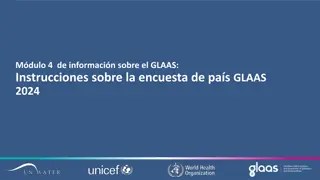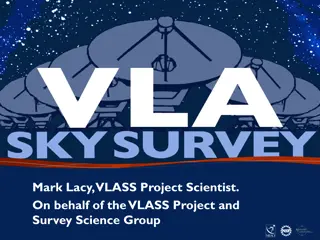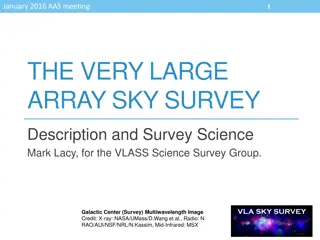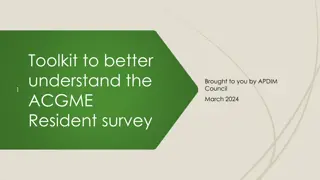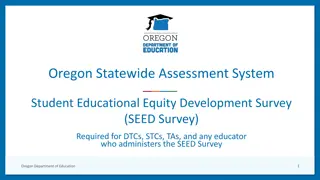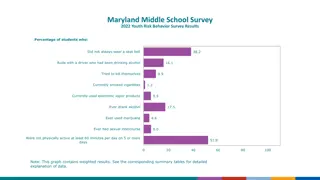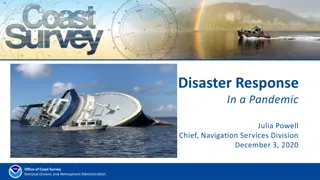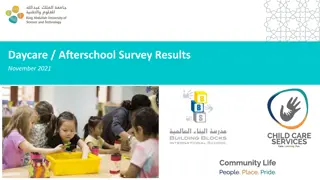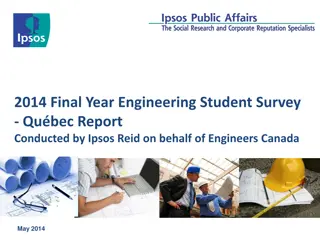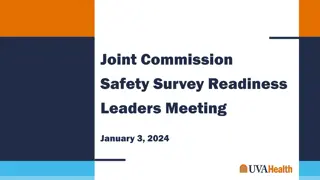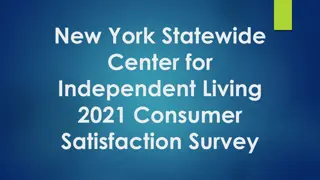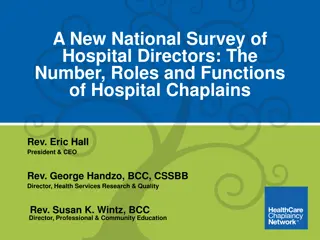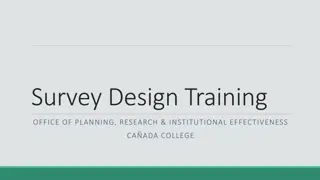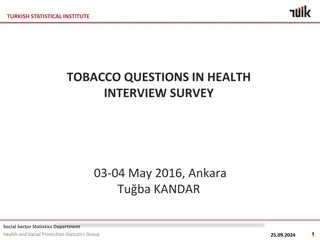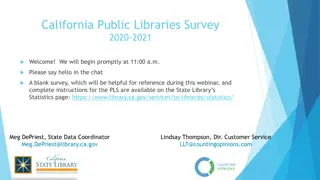Survey Highlights
The UTRGV 2017 National Survey of Student Engagement (NSSE) provides insights into student engagement, focusing on themes like experiences with faculty, academic challenge, learning with peers, and campus environment. The survey examines student-faculty interactions, effective teaching practices, higher-order learning, and collaborative learning, among other engagement indicators. Institutions use NSSE data to enhance the quality of undergraduate experiences and foster student success.
Download Presentation

Please find below an Image/Link to download the presentation.
The content on the website is provided AS IS for your information and personal use only. It may not be sold, licensed, or shared on other websites without obtaining consent from the author.If you encounter any issues during the download, it is possible that the publisher has removed the file from their server.
You are allowed to download the files provided on this website for personal or commercial use, subject to the condition that they are used lawfully. All files are the property of their respective owners.
The content on the website is provided AS IS for your information and personal use only. It may not be sold, licensed, or shared on other websites without obtaining consent from the author.
E N D
Presentation Transcript
UTRGV 2017 National Survey of Student Engagement (NSSE) Survey Highlights Prepared by: Office of Strategic Analysis and Institutional Reporting (SAIR) November 2018
Outline What is NSSE? Response Rate at UTRGV Four NSSE Themes for Student Engagement Engagement Indicators in NSSE Themes Performance Comparisons Satisfaction with UTRGV Engagement Indicators in Need of Attention Recommendations Areas to be Celebrated
What is NSSE? The National Survey of Student Engagement (NSSE) collects information from first-year and senior students about the characteristics and quality of their undergraduate experience. It assesses the extent to which students engage in educational practices associated with high levels of learning and development. The results provide an estimate of how undergraduates spend their time and what they gain from attending their college or university. Institutions use their data to identify aspects of the undergraduate experience that can be improved through changes in policy and practice.
Response Rate Response Rate 30% 24% 25% 23% 22% 21% 19% 19% 20% 19% 17% 15% 10% 5% 0% UTRGV UT System Carnegie Class NSSE 2016 & 2017 First-yr Senior Note: UT System includes the following participants - UT Arlington, UTD, UTEP, UTSA, UT Tyler, and UT Permian Basin. Carnegie Class includes all NSSE 2017 participants in the Carnegie Classification Doctoral Research (Moderate) category. NSSE includes all other NSSE 2016 & 2017 U.S. participants.
Four NSSE Themes for Student Engagement Experiences with Faculty Academic Challenge Students learn firsthand how experts think about and solve problems by interacting with faculty members inside and outside of instructional settings. As a result, faculty become role models, mentors, and guides for lifelong learning. In addition, effective teaching requires that faculty deliver course material and provide feedback in student-centered ways. Two Engagement Indicators investigate this theme: Student-Faculty Interaction and Effective Teaching Practices. Challenging intellectual and creative work is central to student learning and collegiate quality. Colleges and universities promote student learning by challenging and supporting them to engage in various forms of deep learning. Four Engagement Indicators are part of this theme: Higher-Order Learning, Reflective & Integrative Learning, Learning Strategies, and Quantitative Reasoning. Learning with Peers Campus Environment Collaborating with others in mastering difficult material and developing interpersonal and social competence prepare students to deal with complex, unscripted problems they will encounter during and after college. Two Engagement Indicators make up this theme: Collaborative Learning and Discussions with Diverse Others. Students benefit and are more satisfied in supportive settings that cultivate positive relationships among students, faculty, and staff. Two Engagement Indicators investigate this theme: Quality of Interactions and Supportive Environment.
Engagement Indicators in NSSE Themes Academic Challenge Learning with Peers Experiences with Faculty Campus Environment Higher-Order Learning Collaborative Learning Student-Faculty Interaction Quality of Interactions Reflective & Integrative Learning Learning Strategies Discussions with Diverse Others Effective Teaching Practices Supportive Environment Quantitative Reasoning
Performance Comparisons for UTRGV on Academic Challenge First-Year Students Seniors Compared with Compared with Academic Challenge UTRGV Score UTRGV Score UT Carnegie Class UT Carnegie Class NSSE NSSE System System 40.3 Higher-Order Learning 39.1 Reflective & Integrative Learning 35.3 36.2 38.6 38.9 Learning Strategies Quantitative Reasoning 28.2 28.8 The Scale is 60 points indicates the score of UTRGV is significantly lower than this comparison group indicates the score of UTRGV is significantly higher than this comparison group A BLANK indicates no statistically significant difference
Performance Comparisons for UTRGV on Learning with Peers First-Year Students Seniors Compared with Compared with Learning with Peers UTRGV Score UTRGV Score UT Carnegie Class UT Carnegie Class NSSE NSSE System System Collaborative Learning 34.1 34.0 Discussions with Diverse Others 32.3 33.6 The Scale is 60 points indicates the score of UTRGV is significantly lower than this comparison group indicates the score of UTRGV is significantly higher than this comparison group A BLANK indicates no statistically significant difference
Performance Comparisons for UTRGV on Experiences with Faculty First-Year Students Seniors Compared with Compared with Experiences with Faculty UTRGV Score UTRGV Score UT Carnegie Class UT Carnegie Class NSSE NSSE System System Student-Faculty Interaction 22.9 23.5 Effective Teaching Practices 41.5 39.8 The Scale is 60 points indicates the score of UTRGV is significantly lower than this comparison group indicates the score of UTRGV is significantly higher than this comparison group A BLANK indicates no statistically significant difference
Performance Comparisons for UTRGV on Campus Environment First-Year Students Seniors Compared with Compared with Campus Environment UTRGV Score UTRGV Score UT Carnegie Class UT Carnegie Class NSSE NSSE System System 41.0 39.0 Quality of Interactions Supportive Environment 36.4 30.5 The Scale is 60 points indicates the score of UTRGV is significantly lower than this comparison group indicates the score of UTRGV is significantly higher than this comparison group A BLANK indicates no statistically significant difference
Satisfaction with UTRGV Percentage Rating Their Overall Experience at their institution as "Excellent" or "Good" 88% 87% 86% 86% 86% 85% 85% 84% 83% 84% 82% 80% 78% 77% 76% 74% 72% UTRGV UT System Carnegie Class NSSE First-Year Seniors
Satisfaction with UTRGV Percentage who would Definitely or Probably Attend this Institution Again 86% 84% 83% 84% 83% 83% 83% 82% 82% 82% 80% 78% 76% 74% 72% 72% 70% 68% 66% UTRGV UT System Carnegie Class NSSE First-Year Seniors
Engagement Indicators in Need of Attention Campus Environment: Quality of Interactions Recommendation: Consider initiatives that will aid in improving the interactions of first-year students with Faculty and Student Services Staff (career services, student activities, housing, etc.); and improving the interactions of seniors with Academic Advisors, Faculty, Student Services Staff, and Other Administrative Staff. First-Year Students Seniors Quality of your interactions with the following Compared with Compared with UTRGV Score UTRGV Score UT Carnegie Class UT Carnegie Class NSSE NSSE System System 5.3 4.7 Academic Advisors 5.1 5.2 Faculty 4.8 4.5 Student Services Other Administrative Staff 5.0 4.5 The Scale is 7 points indicates the score of UTRGV is significantly lower than this comparison group indicates the score of UTRGV is significantly higher than this comparison group A BLANK indicates no statistically significant difference
Engagement Indicators in Need of Attention Learning with Peers: Discussions with Diverse Groups Recommendation: Consider initiatives that aid in recruiting students from backgrounds other than those most common in the Rio Grande Valley Region (i.e., ethnic, economic, religious and political backgrounds). Consider initiating more student activities that encourage diverse groups of students to engage one another and learn about their similarities/differences in a positive manner. Consider promoting Learning Communities or some other formal program where groups of students take two or more classes together.
Other Areas in Need of Attention Recommendations: Emphasize: Availability of learning support services that promote academic success (i.e., tutoring services, writing center). Availability of support for overall well-being of students (i.e., recreation, health care, counseling) and services that can teach them about how to best manage non-academic responsibilities (i.e., work, family). Advantages to attending campus activities and events (i.e., performing arts, athletics events). Importance of participating in co-curricular activities for a better student experience.
Areas to be Celebrated Encourage faculty to continue to do the following: Encourage students to complete reading and assignments before coming to class. Clearly explain course goals and requirements. Encourage students to work with other students on course projects or assignments. Provide feedback on drafts or work in progress. Provide prompt and detailed feedback on tests or completed assignments. Encourage students to combine ideas from different courses when completing assignments. Encourage students to continue community service/volunteer work. Continue to emphasize service-learning.
Areas for Encouragement Recommendations: Encourage faculty to do the following: Talk with students about their career plans. Encourage students to work with faculty on activities other than coursework (committees, student groups, etc.). Encourage students to participate in class. Encourage students to participate in internships, co-op, field experience, student teaching, or clinical placement. Encourage students to participate in a study abroad program. Encourage students to work with faculty on a research project. Encourage students to complete a culminating senior experience (capstone course, senior project or thesis, etc.).
For detailed frequency tables and more information on NSSE Results Visit http://www.utrgv.edu/sair (Look under Data and Reports for Student Survey Results)




